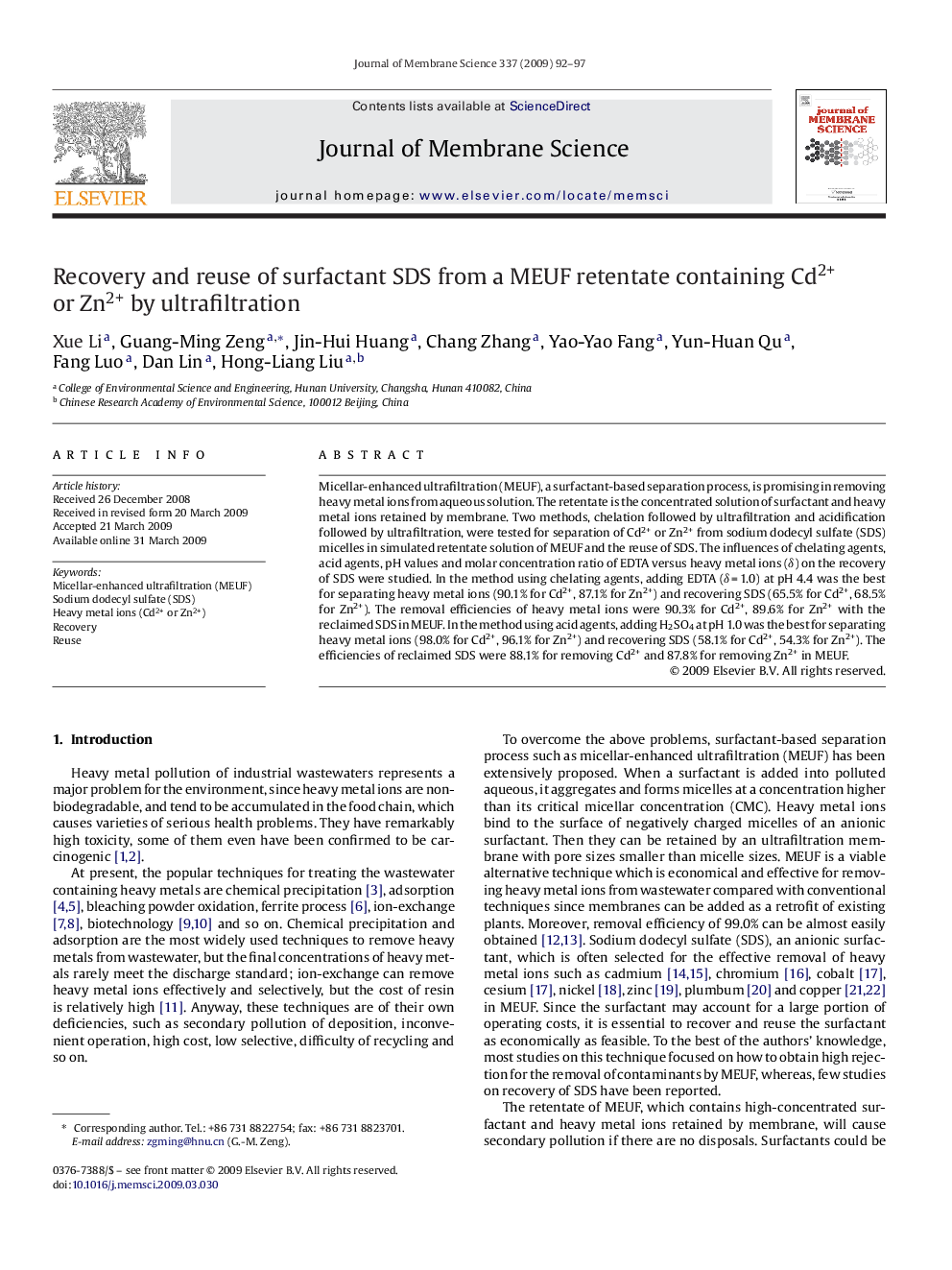| Article ID | Journal | Published Year | Pages | File Type |
|---|---|---|---|---|
| 637132 | Journal of Membrane Science | 2009 | 6 Pages |
Micellar-enhanced ultrafiltration (MEUF), a surfactant-based separation process, is promising in removing heavy metal ions from aqueous solution. The retentate is the concentrated solution of surfactant and heavy metal ions retained by membrane. Two methods, chelation followed by ultrafiltration and acidification followed by ultrafiltration, were tested for separation of Cd2+ or Zn2+ from sodium dodecyl sulfate (SDS) micelles in simulated retentate solution of MEUF and the reuse of SDS. The influences of chelating agents, acid agents, pH values and molar concentration ratio of EDTA versus heavy metal ions (δ) on the recovery of SDS were studied. In the method using chelating agents, adding EDTA (δ = 1.0) at pH 4.4 was the best for separating heavy metal ions (90.1% for Cd2+, 87.1% for Zn2+) and recovering SDS (65.5% for Cd2+, 68.5% for Zn2+). The removal efficiencies of heavy metal ions were 90.3% for Cd2+, 89.6% for Zn2+ with the reclaimed SDS in MEUF. In the method using acid agents, adding H2SO4 at pH 1.0 was the best for separating heavy metal ions (98.0% for Cd2+, 96.1% for Zn2+) and recovering SDS (58.1% for Cd2+, 54.3% for Zn2+). The efficiencies of reclaimed SDS were 88.1% for removing Cd2+ and 87.8% for removing Zn2+ in MEUF.
